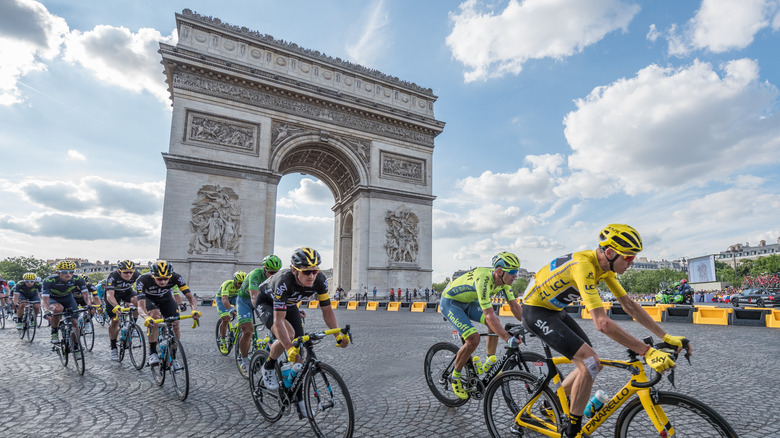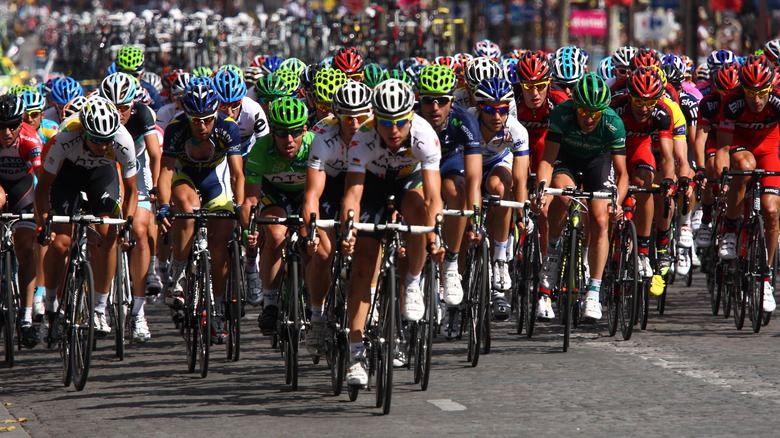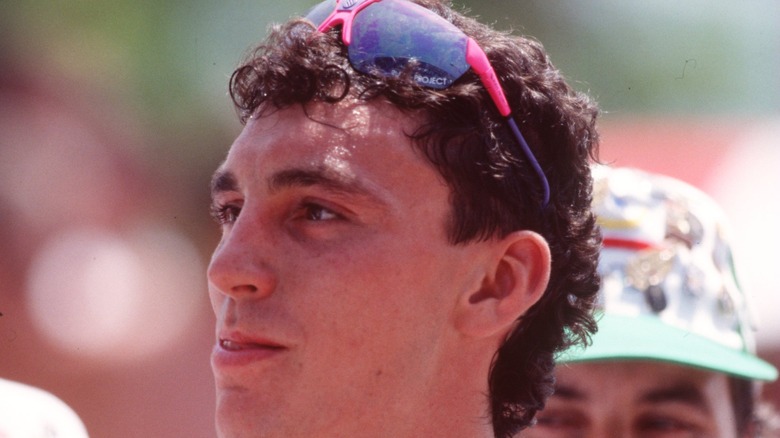How Many People Have Died During The Tour De France?
With the 2021 Tour de France in high gear, what better time to explore the history of France's most popular and enduring sporting event? Beginning in 1903, and also known as "Le Tour," the Tour de France is also the world's largest annual sporting event (via Men's Journal). Taking place over 21 days, and covering over 2,174 miles (3,500 kilometers), the Tour de France has a cash purse of over $500,000 and affords instant celebrity to the winner.
Broken down into 21 stages and split into 5 categories, cyclists from the world over have to contend with two individual time trials, plus they must ride over nine flat terrains, three hilly courses, and seven mountain stages in order to complete the race (via Men's Journal). The Tour de France is one of the most grueling athletic endeavors created. And with such a grueling course and schedule, there's bound to be some fatalities during the race's long history. According to Active, four people have perished over the Tour's demanding schedule.
The Tour de France is a treacherous race
In 1910, Adolphe Hélière was the first person to die during the Tour de France. Just seven years after its inception, 19-year-old Hélière died while taking a break from the race. After completing the sixth stage of the Tour, Hélière, along with three other cyclists, went to the beach (via LaLa Sport). While swimming in the ocean, Hélière died. The actual cause of his death remains a point of debate; however, Hélière likely died from either hydrocution (known as cold shock response) or a jellyfish sting. No matter the cause, Adolphe Hélière died on July 14th, 1910.
Francisco Cepeda was the next person to die during the Tour de France. A Spanish cyclist born on March 8, 1906, Cepeda competed in the 1935 Tour de France. While cycling in the 18th stage of the Tour, Cepeda crashed on the treacherous Col du Galibier (via Dangerous Roads). A mountain pass high in the Alps, the Col du Galibier is also the highest point of the Tour de France. It was during the descent through the pass that Cepeda crashed. He died on his way to the hospital at the age of 29.
A Tour de France incident highlights the importance of helmets
During the 1967 Tour de France, British cyclist Tom Simpson died during the 13th stage of the Tour (via the Guardian). While attempting to ascend Mont Ventoux, Simpson collapsed. A mountain trek that takes the course 6,000 ft above ground level, Simpson passed out 2 miles before reaching the summit of the mountain. However, it wasn't just the heat or the tough terrain that killed Simpson. According to Cycling Weekly, his post-mortem examination revealed a combination of amphetamines and alcohol in his system as well.
And lastly, there's Fabio Casartelli. A cyclist hailing from Como, Italy, Casartelli competed in the 1995 Tour de France. While making the descent down Col de Portet d'Aspet, a mountain pass with an elevation of over 3500 ft (1,069 meters) (via Climbfinder), Casartelli crashed into a concrete pylon (via Los Angeles Times). Casartelli was reportedly cycling at around 55 mph when he missed a turn and crashed. While his exact cause of death is controversial, it's believed the point of impact was the top of his skull (via Helmets.org). This suggests that if Casartelli was wearing a helmet, which was not mandatory during the Tour de France at this time, it's possible he may have survived the crash, although experts believe that the rate of speed may have negated any benefit a helmet would have had.


